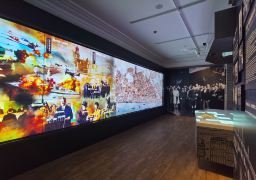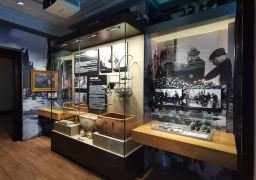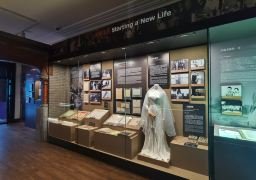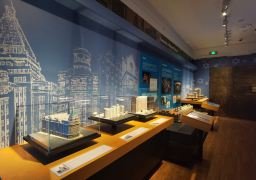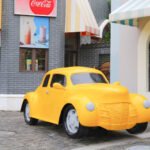The Shanghai Jewish Refugees Museum is located at the intersection of Changyang Road and Zhoushan Road in Hongkou District, established in 2007, and built around the former site of the Ohel Moshe Synagogue, one of the centers of Jewish activities in Shanghai at that time. The museum completed its expansion in November 2020. The new museum covers an area of about 4,000 square meters, including the former site of the Ohel Moshe Synagogue and the original residential buildings to its west and south, preserving their original architectural style. To date, the museum has collected approximately 1,000 pieces (sets) of historical materials. The new museum uses new exhibition technologies such as scene restoration and interactive multimedia to truly reproduce the warm details of the interactions, mutual assistance, and overcoming of difficulties between Jewish refugees and the Chinese people. It vividly recreates the history of European Jews seeking refuge in Shanghai during the 1930s and 1940s. The exhibition hall itself is also a historical site within China that reflects the life of Jewish refugees in China during World War II. The museum will continue to tell the unique Chinese story of Shanghai people’s selfless acceptance of Jewish refugees to both Chinese and foreign tourists, carrying this special global historical memory in all aspects. Opening hours: January 1st to October 7th, Tuesday to Sunday, 09:00-17:00; October 9th to December 31st, Tuesday to Sunday, 09:00-17:00; January 1st to October 7th, Monday, closed all day; October 9th to December 31st, Monday, closed all day; National Day, 09:00-17:00; October 8th, closed all day. Preferential policies: Children: Children under 1.3m (inclusive) must be accompanied by an adult, free of charge; Disabled: With a disability certificate, free of charge; Military personnel: Active military personnel and dependents with relevant valid documents, free of charge; Police officers: On-duty police officers with relevant valid documents, free of charge; Firefighters: Firefighters with relevant valid documents, free of charge; Students: Full-time undergraduate students and below (excluding adult education graduate students), under 23 years old (inclusive), half price. Additional note: Disabled people with a disability certificate, active military personnel, on-duty police officers, dependents, and firefighters with relevant valid documents can receive free tickets at the museum’s visitor center. Must-see tips [Visiting Instructions] (1) Window tickets are valid for one entry only, non-refundable once sold. (2) It is strictly forbidden to bring flammable, explosive, toxic, harmful items, controlled knives, and pets into the museum. (3) Protect cultural relics and exhibits, do not touch, move, or damage them. Do not run or make loud noises in the museum. (4) Children under 1.3 meters in height, elderly people with limited mobility, and special individuals must be accompanied by relatives during the visit. (5) Drunkards, improperly dressed individuals, and those without civil conduct capacity and without the accompaniment of a guardian are not allowed to enter.
(6) Smoking is strictly prohibited throughout the museum, including outdoor areas. (7) Please do not bring opened food and beverages into the exhibition halls, and eating and drinking are not allowed inside the halls. (8) The use of flash photography, selfie sticks, or tripods is not permitted in the exhibition halls; filming or live broadcasting without permission is also prohibited. Photography is restricted in certain exhibition areas, please pay attention to the signs and guidelines within the halls. (9) Maintain the cleanliness of the museum environment by sorting and disposing of waste in designated areas. (10) In the event of significant events or special circumstances requiring temporary closure, the museum will announce this in advance. (11) During peak visitor times, please queue orderly and wait for your turn to enter the museum.

